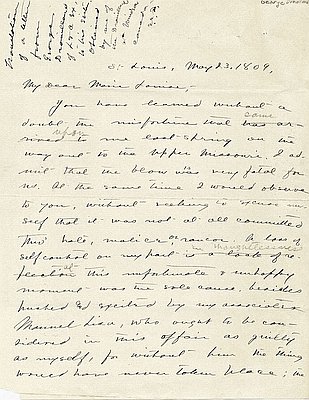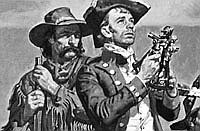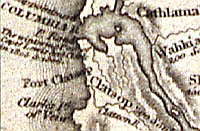Encounter with the Nez Perce
Lewis and Clark had entered the region of salmon and the people who relied on anadromous fish species to varying degrees for year-round sustenance. Unlike the buffalo-hunting tribes on the Plains, indigenous groups in the Columbia River Basin mixed hunting, root and other plant gathering, and fishing, living along major rivers and tributaries much of the year and seasonally in upland camps.
The farther west Lewis and Clark traveled down the Columbia River system to the sea, the more the indigenous people based their economies on salmon and the more they hued to the river. In their descent of the Columbia, the captains had to make more adjustments to geography and Indian people than at any other time in their journey. The Columbia, they realized more and more, was nothing like the Missouri.
Down off the punishing Lolo Trail, where two inches of snow had covered the men one night and they had eaten only a little soup, the Corps dropped to the welcoming meadows along the Clearwater River in late September 1805. Not unlike their reliance on the Shoshone weeks earlier, Lewis and Clark could only hope that the Indians they encountered would accept their friendly gestures and take pity on them.
That hope nearly expired as Clark and then Lewis met with the Nez Perce in their camps. A Nez Perce woman who had been captured years before and lived in Canada with whites assured the men that the bedraggled whites should be trusted, thereby preventing a potential tragedy. Instead, the Nez Perce willingly furnished food. As Sergeant John Ordway put it in his journal: “we halted about one hour and a half eat hearty of the Sammon and bread.”
The Nez Perce opened their camps to the Expedition, providing them with geographic information, food, and advice on where they might find timber for canoes. Gorging themselves with dried salmon and camas bread played havoc with the men’s digestion, leaving them barely able to ride horses. Their health returned, and with Nez Perce help, they set about hollowing out five pine-log canoes for their descent of the Clearwater, Snake, and Columbia rivers.
The Nez Perce had good reasons to aid Lewis and Clark, because they quickly realized—through George Drouillard’s expert sign language—that American trade might well bring much-needed guns to help protect them from enemy raiders, such as the Blackfeet. In fact, the Nez Perce so wanted to cement their relationship that Twisted Hair, one of the headmen, agreed to guide the explorers downriver and to assign the care of the Expedition’s horses to his son for retrieval by the captains on their return trek. Lewis had branded each horse on the shoulder “with a stirrup Iron.”
On October 7, 1805, the Corps, Twisted Hair, and Teotarsky, another Nez Perce chief, pushed off from the Expedition’s “canoe camp” and drifted west with the current down the Clearwater River. The season had ebbed from the Corps, so they hurried down the Snake River to gain the Pacific Coast by winter, only to experience some of the hardest river travel of the journey. The lower Snake was dominated by steep cliffs, no timber, and rapid upon dangerous rapid that threatened canoes and forced many portages. Ordway recorded the conditions they encountered on October 10th:
about noon we came to a bad rockey rapid where 2 canoes ran fast on a rock but we got off without Injury. a Small Island on the Lard. Side of the rapids we halted jist below to dine. then proceeded on about 8 miles then came to another bad rapid at the head of an Island. the canoe I had charge of ran fast on a rock in the middle of the river and turned across the rock. we attempeted to git hir off but the waves dashed over hir So that She filled with water.
The landscape brought the Corps unexpected difficulties and continued to impress on them that the Columbia was much different than the Missouri and that previous ideas about western geography would have to be amended.
© William L. Lang, 2004. Updated and revised by OHP staff, 2014.
Sections
Related Historical Records
From Sergeant John Ordway to his Parents
This letter was written by Sergeant John Ordway to his parents on April 8, 1804. After briefly outlining the nature of the Expedition to his parents, Ordway describes the …
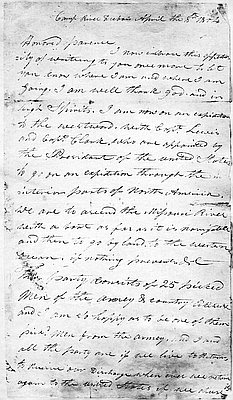
Camas
This drawing of the common camas (Camassia quamash ) was produced for the Oregon Historical Society by staff artist Skip Enge. The blue flowers of the camas, a …
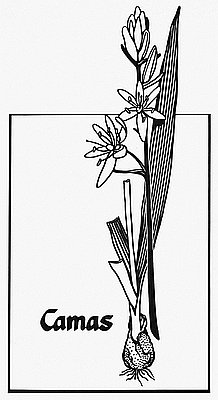
From George Drouillard to his Sister
George Drouillard, a member of the Lewis and Clark Expedition, wrote this letter to his sister on May 23, 1809. It was probably transcribed in about 1900 by …
